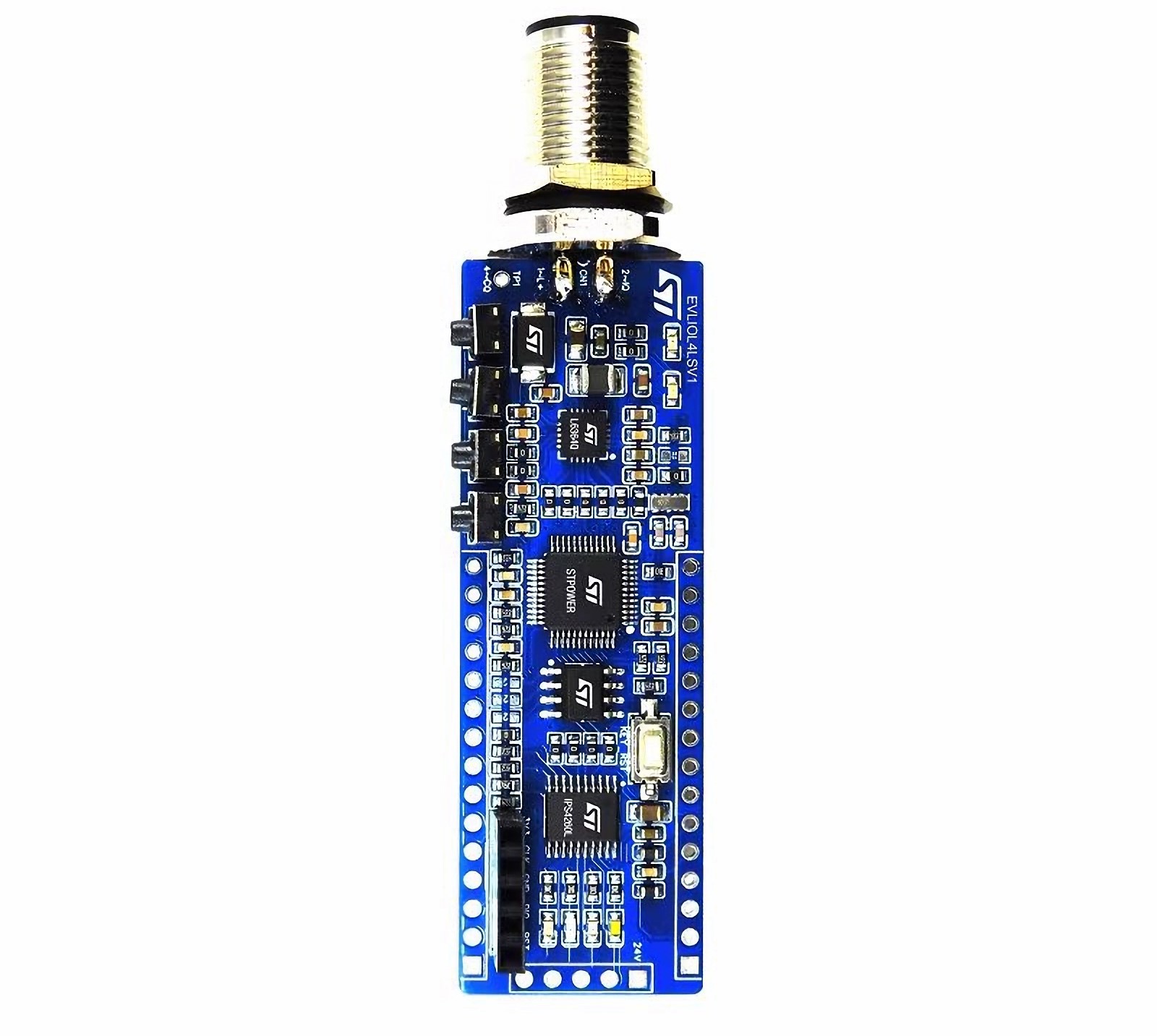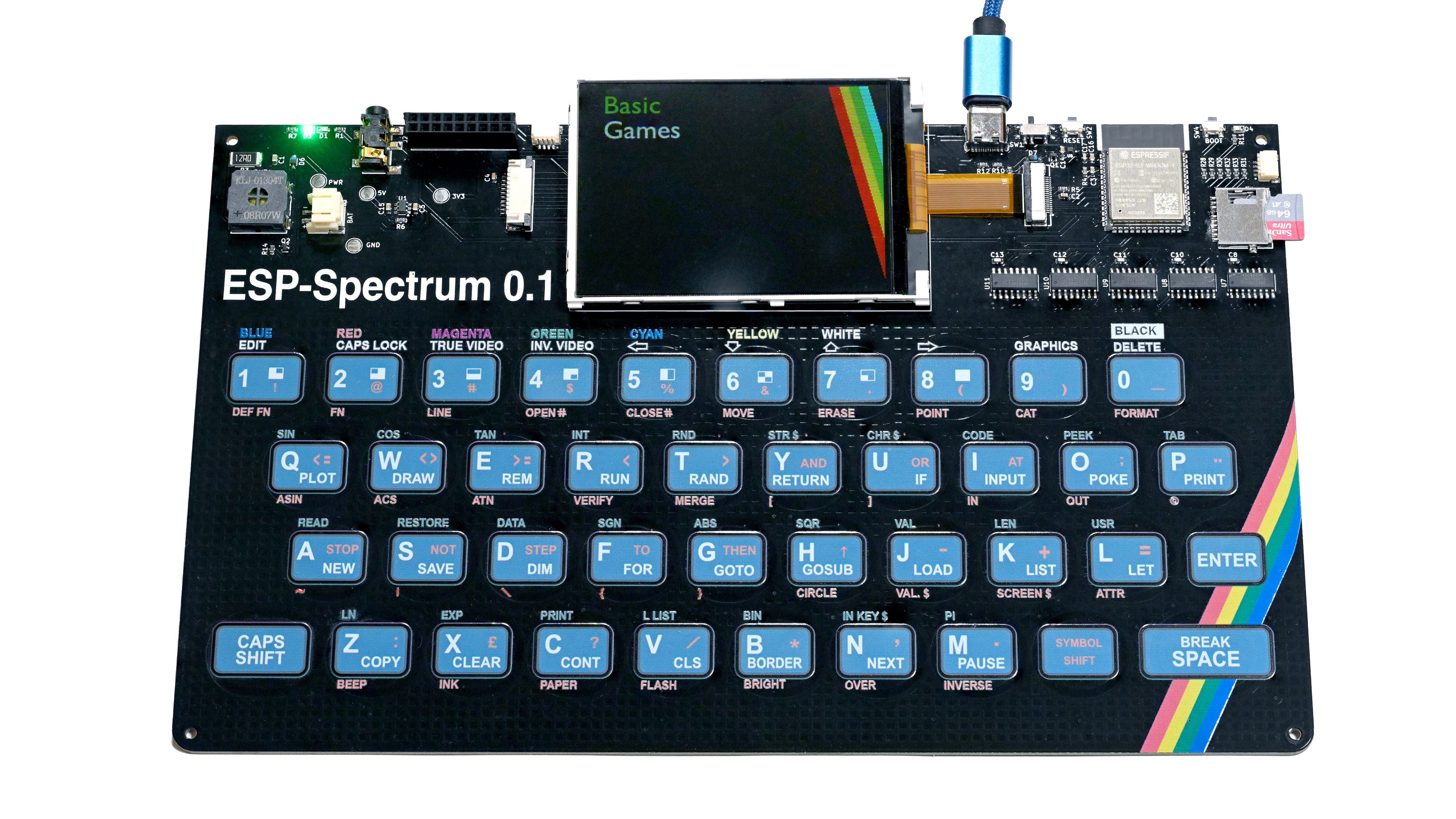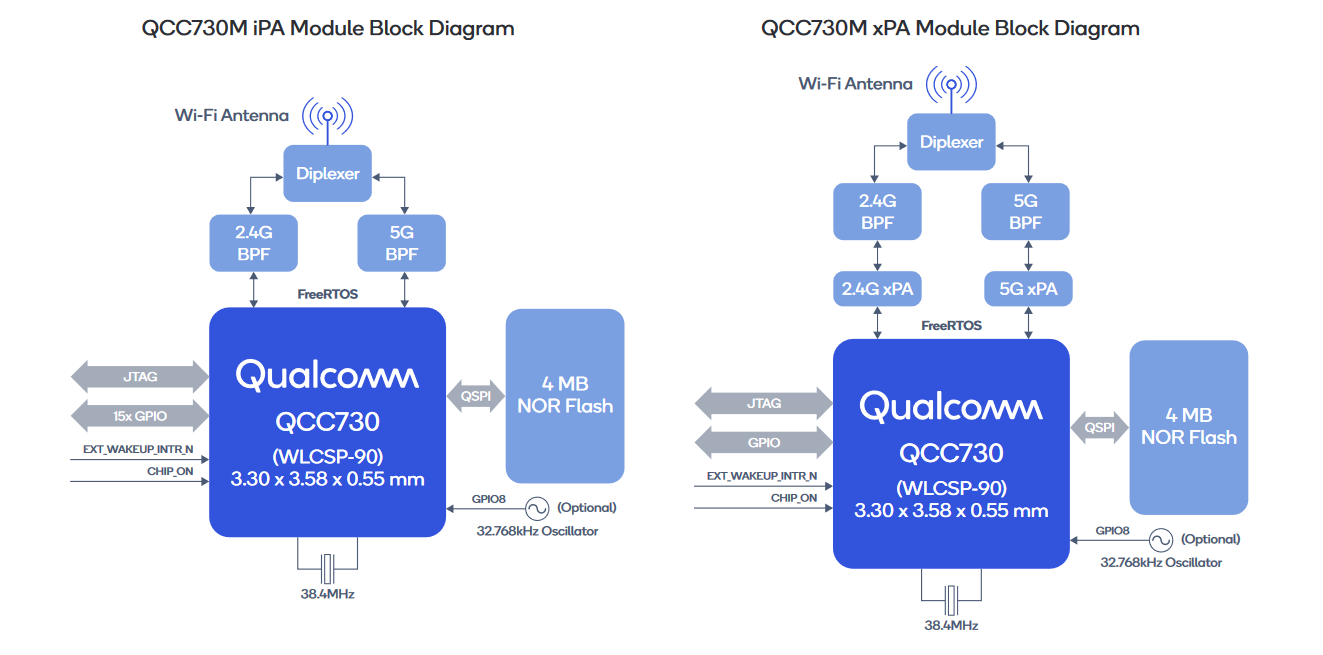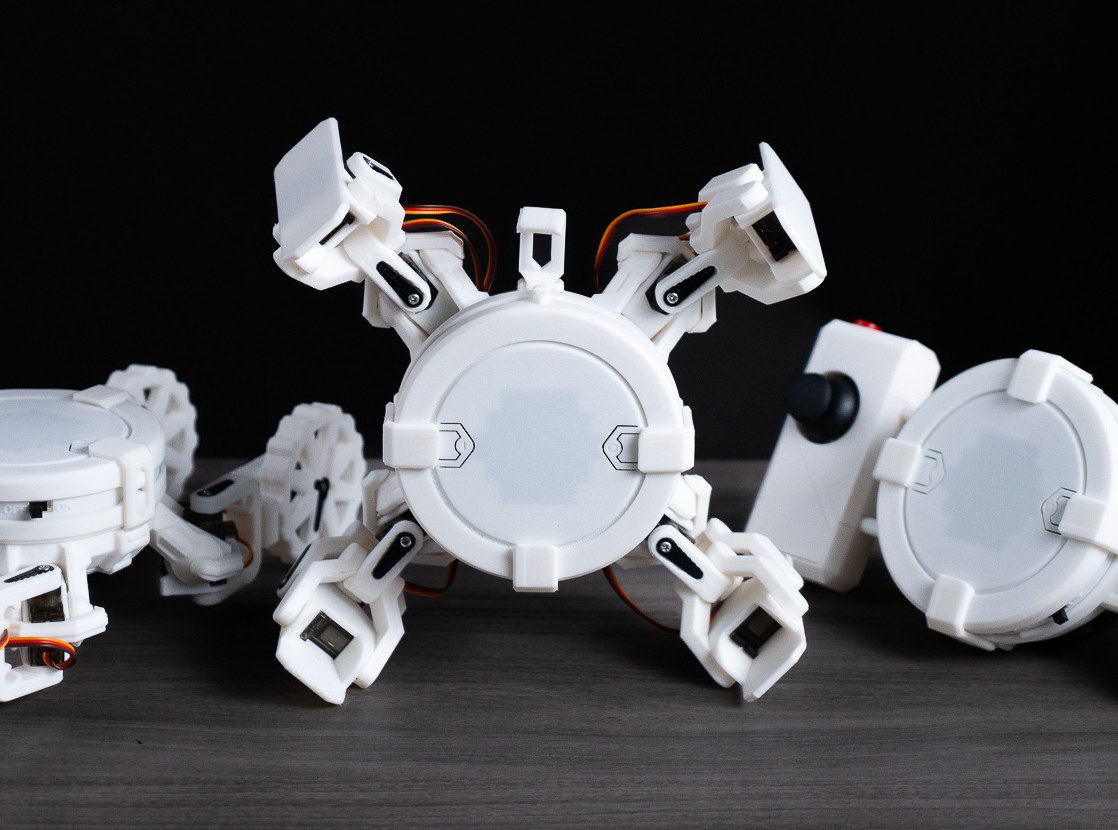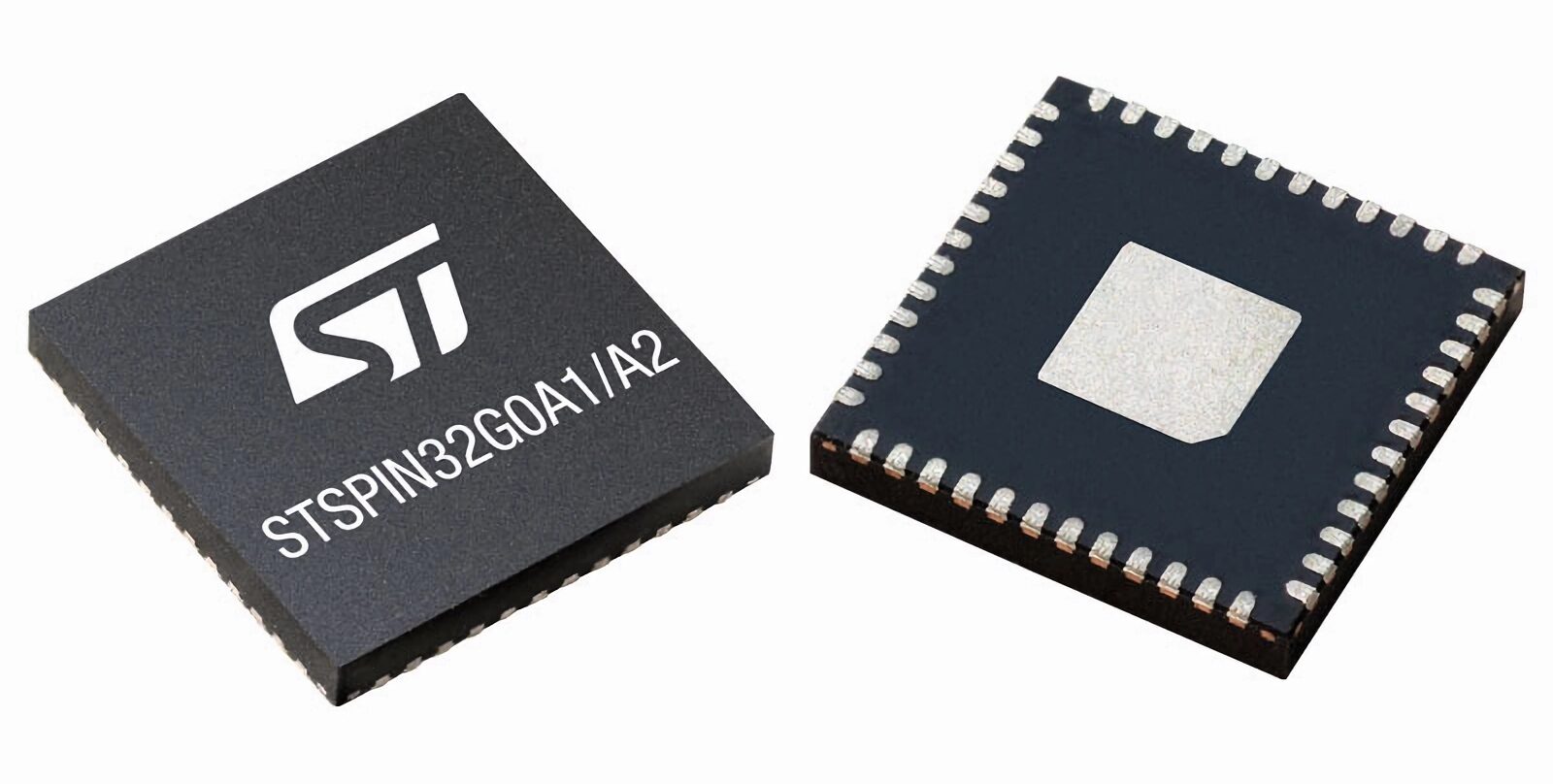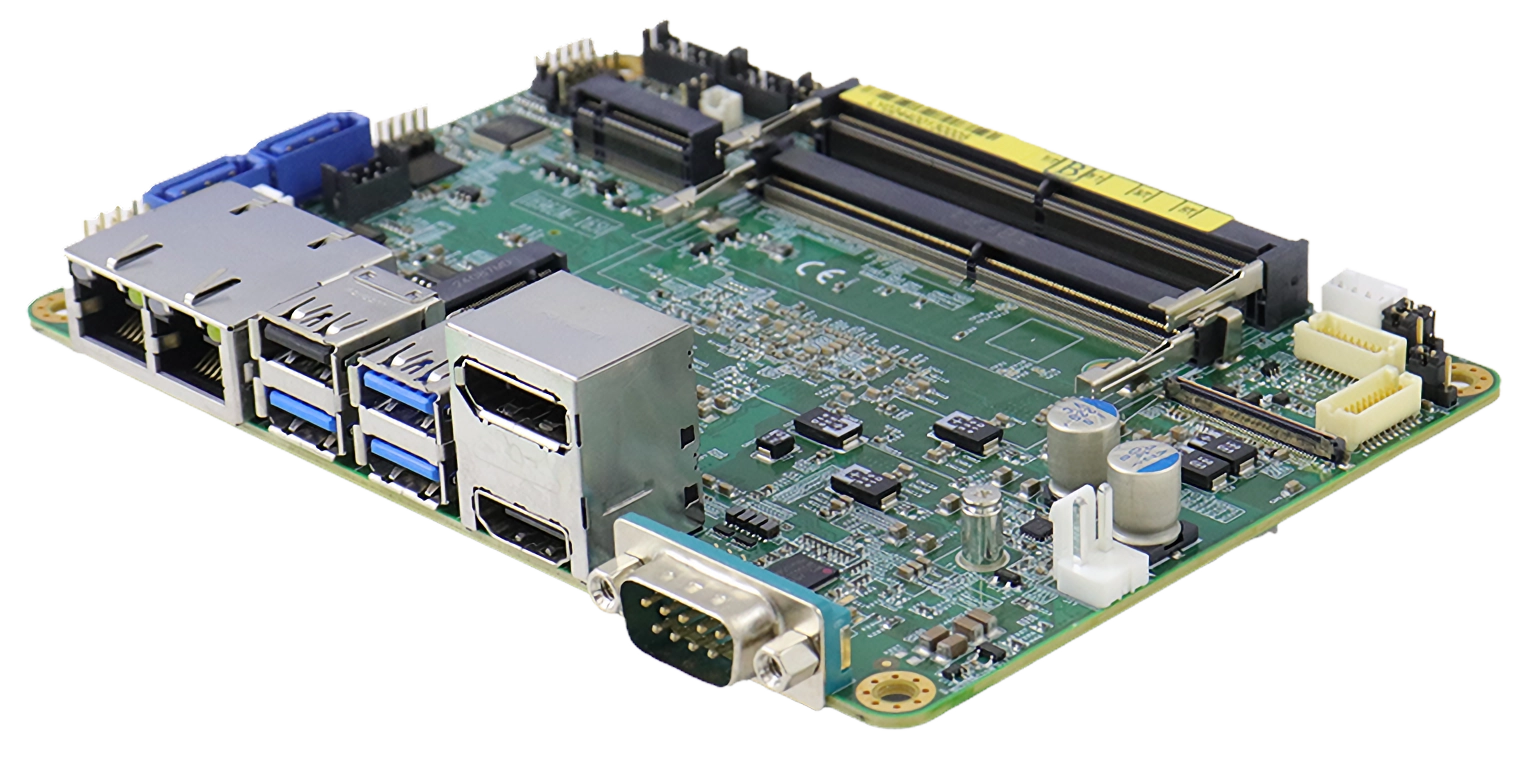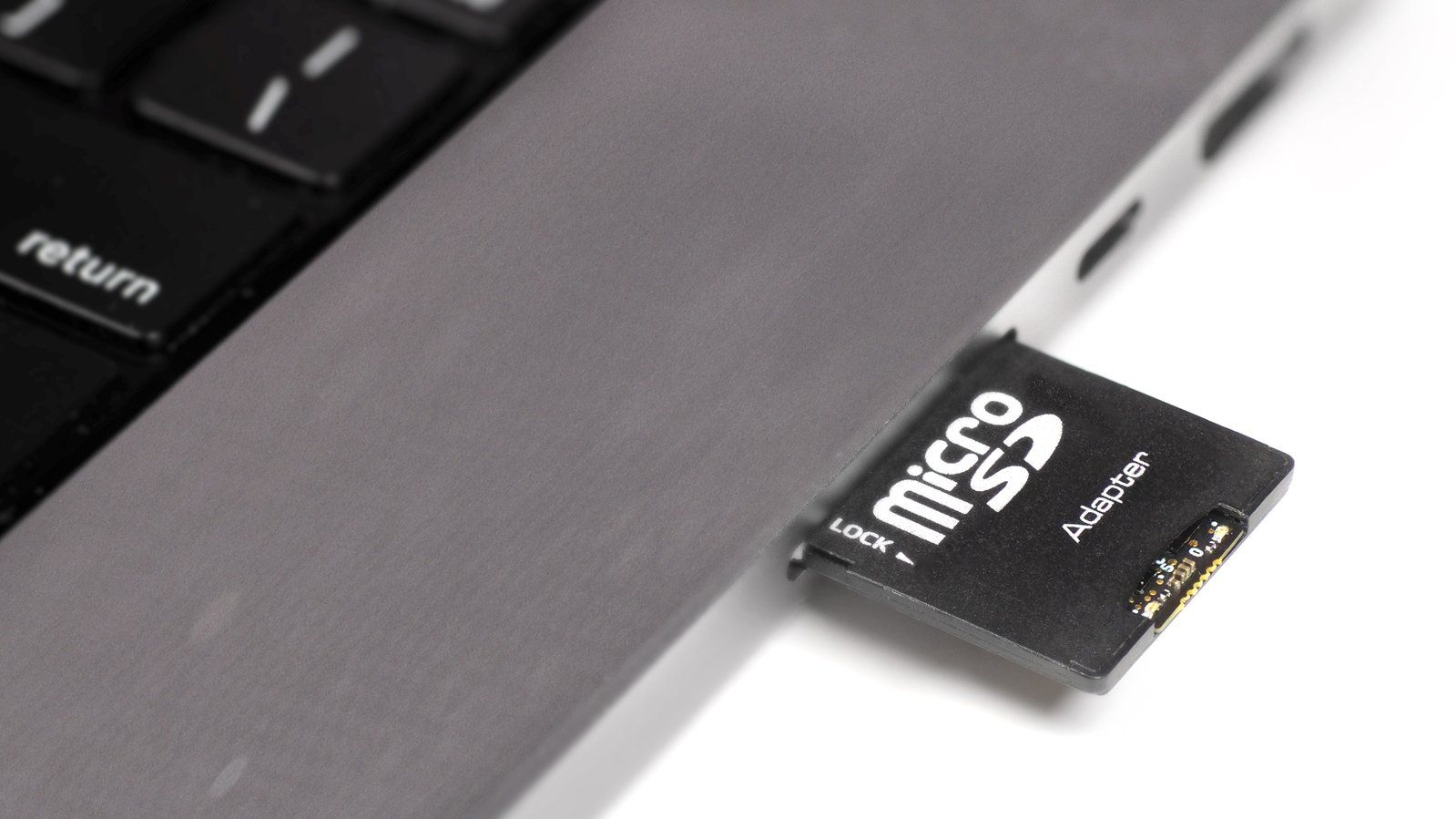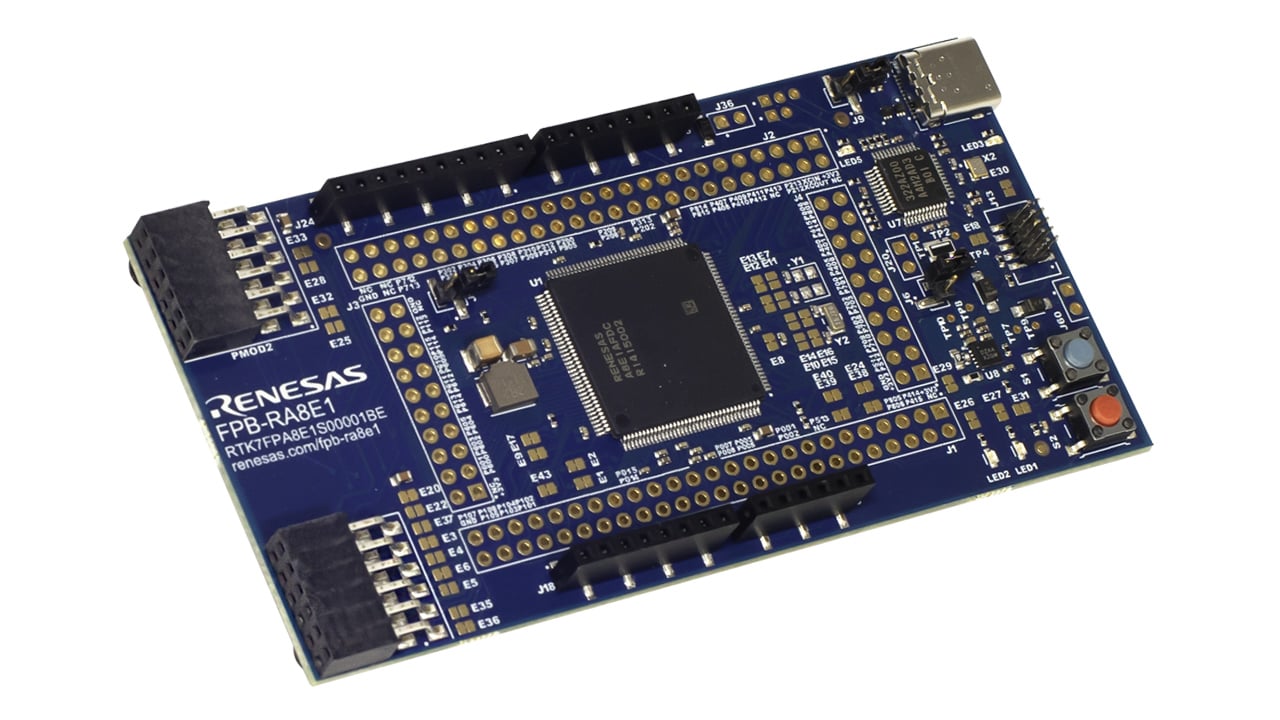STMicro has announced the EVLIOL4LSV1 IO-Link actuator board, an STM32G071CB Cortex-M0+ MCU-based reference design for commercial manufacturers with a built-in protocol stack and application software. Aimed at industrial beacons and home-appliance alarms, the EVLIOL4LSV1 combines the L6364Q dual-channel IO-Link transceiver (communications) and IPS4260L intelligent low-side power switch (for driving industrial loads). The EVLIOL4LSV1 IO-Link actuator board is powered by an STM32G071CB Arm-Cortex-M0+ microcontroller that hosts the proprietary stack and application software and communicates with the transceiver and low-side power switch. The evaluation board can be used to test the IPS4260 and L6364Q ICs. It features a 4-pin M12 connector for an IO-LINK master and a 5-pin SWD connector for programming. It can also directly interface with signaling systems, ranging from smart tower lights in factory automation to funnel alarms for quantity monitoring. The onboard transceiver is protected against electromagnetic interference and supports COM2 and COM3 speeds. It offers multiple modes […]
ESP32 Rainbow is an open-source, ESP32-S3-powered ZX Spectrum single board computer (Crowdfunding)
Retrocomputing enthusiasts will be delighted to learn that a new ZX Spectrum replica is on the market: the ESP32 Rainbow. The single board computer swaps the Zilog Z80 for an ESP32-S3 microcontroller chip running an emulator, bringing the classic 80s computer back to life with a modern twist. It features a built-in color display, a microSD card slot for storage, a built-in touch keyboard in the ZX Spectrum style, and a USB Type-C port for power and data. The keyboard was recreated using full-color UV printing and is the most true-to-life component of the ESP32-S3-based ZX Spectrum single board computer. The touch keys won’t likely offer the best typing experience but that is reminiscent of the original ZX Spectrum. A lovely cherry on top is that the onboard USB-C port supports HID and the device can be used as a keyboard on another computer. The ZX Spectrum is one of […]
Qualcomm QCC730M dual-band WiFi 4 and QCC74xM WiFi 6, BLE 5.3, and 802.15.4 modules target low-power and IoT edge devices
Qualcomm has added two new IoT modules to its wireless connectivity product series: the Qualcomm QCC730M ‘micro-power’ WiFi 4 module and the QCC74xM tri-radio module, with both modules designed for smart homes, smart appliances, medical devices, and industrial applications. The Qualcomm QCC730M is a dual-band, micro-power Wi-Fi 4 module with a 60MHz Arm Cortex-M4F MCU, 640kB SRAM, 1.5MB RRAM, hardware crypto accelerator, and secure boot, debug, and storage. Its low-power design is ideal for portable, battery-powered IoT devices like IP cameras, sensors, and smart locks. Based on the Qualcomm QCC730 module, it features a 36-pin LGA package with a PCB antenna or RF connector and supports up to 4MB of optional NOR flash. The Qualcomm QCC74xM is Qualcomm’s “first programmable connectivity module,” integrating a 32-bit RISC-V module, optional stacked memory (PSRAM and NOR flash), and a tri-radio chipset for WiFi 6, Bluetooth 5.3, and IEEE 802.15.4 (Thread and Zigbee). Its […]
CYOBot v2 ESP32-S3-based open-source modular robotics platform supports up to 16 servos (Crowdfunding)
Create Your Own Bot (CYOBot) v2 is an open-source, modular robotics platform for students, educators, hobbyists, and future engineers based on the ESP32-S3 microcontroller and featuring up to 16 servo motors for complex control. The CYOBot v2 is a follow-up to the previous quadrupedal robotic platform from the same company. It adds new features such as a modular design, an upgrade to the ESP32-S3 chip, more motor channels, and an expansion block with more peripherals. It also supports integrating AI systems, such as ChatGPT, for added functionality. The CYOBot supports up to three configurations via the CYOBrain — which powers the robotics platform and controls the servo motors — and separate 3D-printed components. The CYOBot Crawler is a four-legged robot powered by eight 180-degree servo motors. The CYOBot Wheeler form factor features four 360-degree motors linked to wheels at the end of each leg and is essentially a hybrid between […]
STMicro STSPIN32G0 3-phase motor controllers support up to 24V for portable appliances, up to 600V for industrial automation
STMicro STSPIN32G0 is a new series of advanced 3-phase motor controllers with variable voltage ranging from 45V to 600V that extend STMicro’s portfolio of devices with an integrated MCU and motor driver. The new series combines a triple-half bridge gate driver with the Arm Cortex-M0+-based STM32G0 microcontroller and is capable of handling six-step and field-oriented control (FOC) algorithms. The integrated design of the STSPIN32G0 series offers cost-savings and “significant BOM area reduction without compromising performance and robustness.” There are two main versions of the STSPIN32G0 series, low-voltage and high-voltage. The low-voltage 3-phase motor controllers include a voltage regulator, one or three shunts, and a gate driver rated at 45V and up to 0.6A. They are mainly targeted at home appliances, power tools, and drones. The high-voltage versions can handle either 250V or 600V, making them suitable for industrial inverters and fans. They are targeted at home appliances, air conditioners, home […]
iBASE IB962 3.5-inch SBC features Intel Core Ultra 5/7 SoC, up to 64GB SODIMM memory, and three M.2 slots
iBASE Technology has unveiled the IB962 3.5-inch single-board computer (SBC) powered by the Intel Core Ultra 5/7 100 Series processor family (formerly Meteor Lake U/H) and delivering an “optimal balance of performance and power efficiency.” The IB962 3.5-inch SBC mostly follows the IB961 board‘s design, offering more powerful SoC options, more system memory, and an HDMI 2.0 display interface supporting 4K resolution at 60Hz. It provides dual Gigabit Ethernet networking, three USB 3.2 ports (two via pin headers), three USB 2.0 ports, and three M.2 slots (M-Key + E-Key + B-Key) for networking, storage, and cellular communication. While IB962 is not a single-board computer in the strictest sense since it uses SODIMM sockets, it is still quite compact and useful for portable or space-constrained applications. It is intended for industrial automation, manufacturing, retail, entertainment, healthcare, and various edge AI applications. It is a larger alternative to AAEON’s PICO-MTU4 Pico-ITX SBC […]
Signaloid C0-microSD is an iCE40UP5K FPGA SoM in the microSD card form factor (Crowdfunding)
Cambridge-based hardware and cloud computing company, Signaloid has begun crowdfunding for the C0-microSD – a tiny, programmable iCE40UP5K FPGA system-on-module (SoM) in a microSD card form factor. It comes preloaded with a RISC-V softcore and users can also load custom FPGA designs onto the board. Part of the Signaloid C0-microSD’s unique appeal is its SD card form factor, which allows it to fit in unused full SD or microSD slots. This allows the implementation of FPGA-based hardware acceleration in systems without traditional expansion interfaces like PCIe M.2 slots. It can also be interfaced with as a standard SD block device and used to bring hardware-accelerated data processing to existing industrial automation, manufacturing, and robotics systems. The iCE40UP5K FPGA SoM has two main use cases: a hot-pluggable FPGA module or a hot-pluggable RISC-V co-processor module. The SD interface allows you to load custom FPGA bitstreams and applications onto the module from […]
Renesas RA8E1 and RA8E2 entry-level Arm Cortex-M85 MCUs target cost-sensitive applications
Renesas has expanded its Arm Cortex-M85-based RA8 series to include two new entry-level MCUs, RA8E1 and RA8E2. The new microcontrollers perform similarly to other Arm Cortex-M85-based microcontrollers and are offered at a lower price point thanks to a streamlined feature set to reduce costs. The RA8E1 and RA8E2 groups of microcontrollers will be useful for high-volume applications in industrial and home automation, healthcare, office equipment, and consumer products. We have previously covered other models in Renesas’ RA8 series, including the Renesas RA8T1, RA8D1, and the very first Cortex-M85 microcontroller, the Renesas RA8M1. The RA8 series consists of microcontrollers based on the Arm Cortex-M85 core with a performance of 6.39 CoreMark/MHz and Arm’s M-Profile Vector Extension which provides a 4x performance boost for DSP and ML workloads while maintaining low power consumption. The RA8E1 and RA8E2 Cortex-M85 microcontroller groups differ mostly in clock speed, available internal and external memory, communication interfaces, […]


